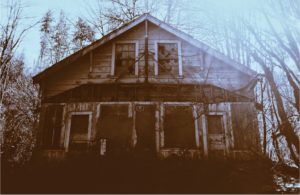 Among the country's stock of some 99 million residential properties, abandoned or vacant foreclosed-upon homes (or "zombie" properties, as they have come to be known) so far in Q1 2021 represented just one out of every 14,825. That is down from 13,074 in 2020 Q4, according to the property analysts at ATTOM Data Solutions. [1]
Among the country's stock of some 99 million residential properties, abandoned or vacant foreclosed-upon homes (or "zombie" properties, as they have come to be known) so far in Q1 2021 represented just one out of every 14,825. That is down from 13,074 in 2020 Q4, according to the property analysts at ATTOM Data Solutions. [1]
“These days, you can walk through most neighborhoods in the United States and not spot a single zombie foreclosure. That continues a remarkable turnaround from the last recession when many communities were dotted by abandoned properties,” said Todd Teta, Chief Product Officer with ATTOM. “The trend does remain on thin ice because foreclosures are temporarily on hold, and the market is still at risk of another wave of zombie properties when the moratorium is lifted, depending on the general state of the broader economy. For the moment, though, zombie properties remain pretty much a non-issue in the vast majority of the country.”
Northeastern and midwestern states continue to see the highest number of zombie properties in the first quarter, with New York at 2,064; Florida with 926, Illinois with 759, Ohio at 633, and New Jersey with 363 zombies. In the West, California tops the list but only saw 130 zombie properties statewide.
“It’s good to see the number of zombie foreclosures continue to fall,” said Rick Sharga, EVP at RealtyTrac, an ATTOM Data Solutions company. “But states with vacant properties caught in long judicial foreclosure processes should take steps to accelerate the disposition of those properties. This would reduce the health risks of having homes vacant during a pandemic, and provide much-needed affordable housing inventory to prospective homebuyers.”
In a nutshell, first-quarter 2021 data shows that empty homes at some point in the foreclosure process continue to disappear as the housing market remains strong and the federal government keeps trying to protect homeowners from an economic slide stemming from the worldwide COVID-19 pandemic.
The detailed report on the state of zombie properties can be read on ATTOM's website [1].